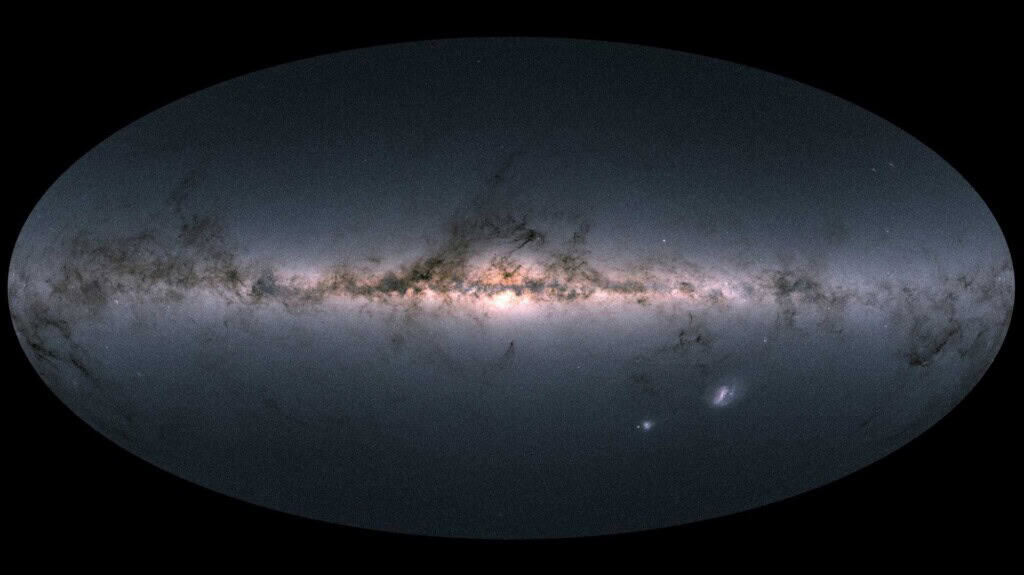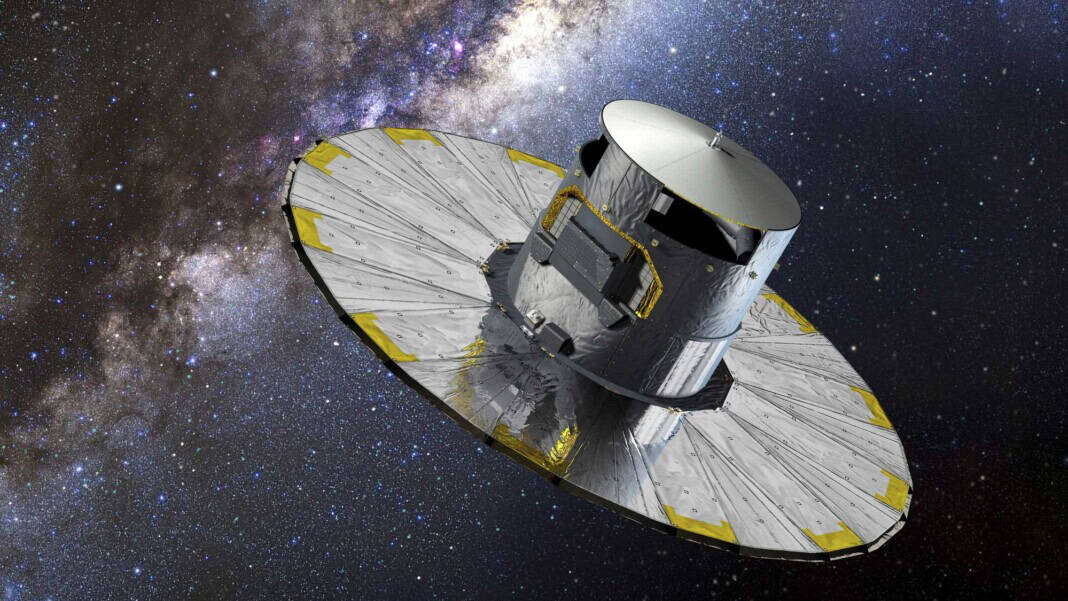This site is also available on:
Deutsch
ESA’s Gaia satellite will enter final hibernation on March 27, 2025. After more than a decade of surveying the sky, its fuel is exhausted. The data collected by Gaia will continue to revolutionize astronomical research and will be fully analyzed and published by 2030.
Final rest state after successful mission
The European science satellite Gaia, operated by the European Space Agency (ESA), will enter final hibernation in March 2025, having exhausted its fuel following more than a decade of intensive celestial surveys. During this time, the mission has collected a wealth of data mapping our Galaxy with unprecedented depth and precision. Gaia has been able to record nearly two billion celestial bodies and their motions, equivalent to one percent of our Galaxy. These extensive observations are in keeping with the historical tradition of compiling star catalogs, dating back to the second century BC, when the Greek astronomer Hipparchus of Nicaea compiled the first catalog.
Data analysis and future applications
Although Gaia’s science operations officially ended in January 2025, this does not mark the end of the mission. The extensive data collected over the years are of exceptional value and will be fully analyzed and made available for research by 2030. The precise observations enabled by Gaia are expected to remain important in astrophysics for decades to come and could lead to significant discoveries about the structure and dynamics of our Milky Way. The detailed information includes not only the positions of stars, but also their surface temperatures and luminosities.
Gaia and the mission milestones
Gaia was launched into space on December 19, 2013, from the European Space Center in Kourou on a Soyuz/Fregat rocket. The first comprehensive data catalog was published in 2016, containing highly accurate information on the positions and brightnesses of over a billion celestial bodies. The accuracy of this data has been unprecedented and exceeded original expectations. Further catalogs were published in 2018, 2020, and 2022, providing not only the positions of celestial bodies, but also their motions and distances with unprecedented accuracy.

Significance for future research
The information collected by Gaia represents the most comprehensive existing star catalog available to the scientific community. This data will allow researchers to map and understand the Milky Way in unprecedented ways, which could help us answer fundamental questions about the evolution and dynamics of our galaxy. Gaia’s mission demonstrates how international cooperation and technological advances have the potential to fundamentally expand our understanding of the universe.
The Gaia satellite was developed in Germany under the leadership of the German Space Agency at the German Aerospace Center (DLR), coordinated on behalf of the Federal Ministry for Economic Affairs and Climate Protection (BMWK). This mission is a prime example of the excellence of German engineering and contributes significantly to Germany‘s international reputation in space.
Gaia discovers dormant black hole
Researchers report that the Gaia mission has achieved a significant breakthrough by discovering an unusually massive, dormant black hole in the Milky Way. This discovery was made possible by the precise measurement of the orbit of a companion star around this black hole, opening up new perspectives for astronomy.
Precision as a milestone
Stefan Jordan, who leads public relations for the Gaia Evaluation Consortium, emphasizes that the precision of Gaia’s measurements represents a milestone in space exploration. He explains that many phenomena were already known before, but could be measured with far less precision. Gaïa’s precise measurements allow assumptions that were previously only roughly estimated to be concretely tested. The discovery of the dormant black hole in June 2024 is a particularly good example of Gaïa’s accuracy.
Unusual black hole discovered
Jordan explains that quiescent black holes differ from active ones in that they absorb very little matter and emit almost no radiation. This specific black hole was detected solely through precise observation of the orbit of a companion star. Such observations are important for more accurately determining the frequency of quiescent black holes in the Milky Way and better understanding their significance for galaxy evolution.
Important European mission
Gaia is a mission of the European Space Agency (ESA), in which Germany plays a key role. The projects are funded by the German Aerospace Center (DLR) on behalf of the Federal Ministry for Education, Research and Culture (BMK) and implemented by leading German research institutions such as the Center for Advanced Aerospace Research (ZAH) and the Max Planck Institute for Advanced Aerospace Research (MPIA). This collaboration encompasses a Europe-wide research network with over 380 experts, underscoring the mission’s international importance.
Technology and science combined
Airbus Defence and Space, formerly EADS Astrium, has been selected as prime contractor for the Gaia mission. The technology used will enable the study of the Milky Way in unprecedented detail. Collaboration between science and industry not only advances our understanding of the universe but also drives technological innovations that extend far beyond the boundaries of astronomy.
ESA’s Gaia mission sets standards in precision space research through collaboration between leading European research institutes and industrial partners. German participation in this project strengthens Germany’s international role in space research and opens up scientific and technological perspectives for future generations.
















